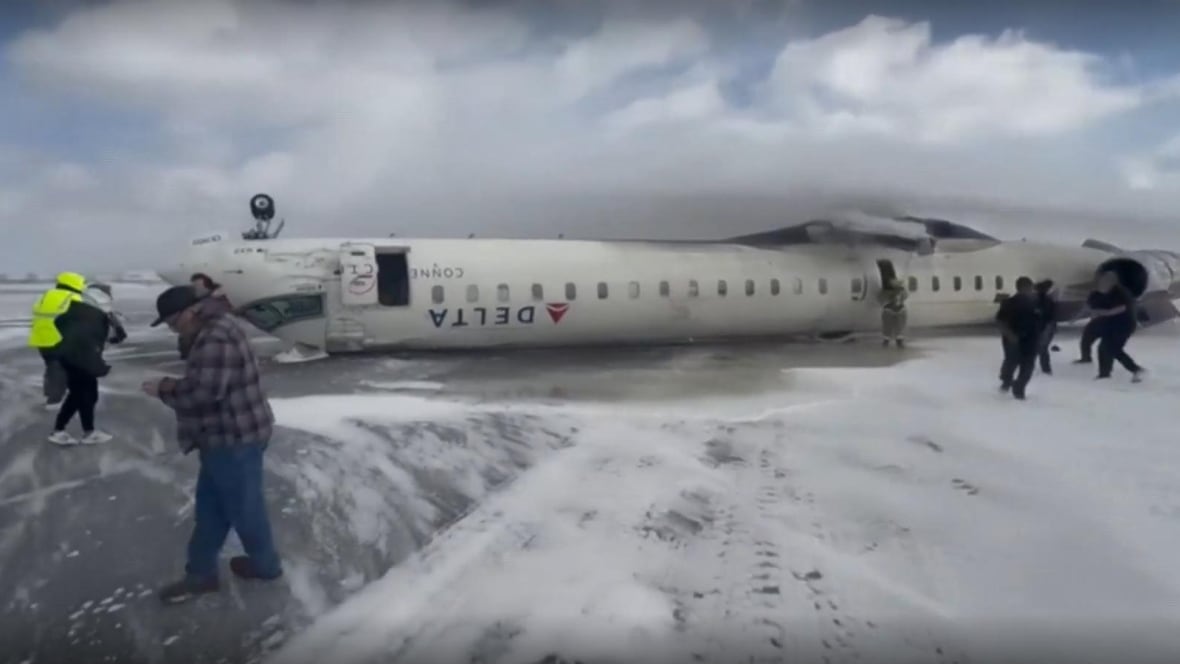A preliminary report from the Transportation Safety Board of Canada suggests that the Delta Air Lines flight which crashed at Pearson airport last month had a high rate of descent. The proximity warning system aboard the aircraft sent an alert less than three seconds before the plane touched down. The crash on February 17 sent 21 people to hospital.
The flight, operated by Delta Air Lines subsidiary Endeavour Air, took off from Minneapolis with 76 passengers, two flight crew members and two cabin crew members. The aircraft was a CL-600-2D24 (Regional Jet Series 900) manufactured by Bombardier Inc. in 2008. Prior to the crash, the flight proceeded uneventfully. The first officer was the pilot flying the plane and had around 1,422 hours total flight time, including 418.7 hours on the type of aircraft involved in the incident. The captain was the pilot monitoring for the flight with 3,570 hours total flight time, including 764 hours on the same aircraft type.
At 2 p.m., winds were gusting to 35 knots in the area. After receiving clearance to land at Runway 23 at Pearson airport, they flew the approach at 149 knots. Around 2.6 seconds before touchdown, a “sink rate” alert sounded, indicating a high rate of descent. The alert came from the plane’s enhanced ground proximity warning system. At the time the alert sounded, the plane’s airspeed was 136 knots. Less than a second before touchdown, the aircraft’s indicated airspeed was 134 knots and its ground speed was 111 knots. Around 2:12 p.m., the right main landing gear touched the runway.
At touchdown, the side-stay attached to the right main landing gear fractured, the landing gear folded into the retracted position, the wing root fractured between the fuselage and the landing gear, and the wing detached from the fuselage, releasing a cloud of jet fuel, which caught fire. The plane then began to slide along the runway, eventually going off the right side into a snow-covered grass area and coming to rest on Runway 15L, near the intersection with Runway 23. Meanwhile, the right wing became fully detached from the plane and slid around 215 feet further along Runway 23. Once the aircraft came to a stop, an evacuation began. There were 21 people injured among the 80 on board, with two people reported to have serious injuries. Passengers were hanging upside down in their seats, suspended by their safety belts, and many of the carry-on baggage and other items ended up on the aircraft ceiling. Some of the injuries happened when passengers unbuckled their belts and fell. Aircraft rescue and fire-fighting (ARFF) crews arrived on scene around five minutes after the crash landing. Shortly thereafter, an explosion occurred outside the aircraft in the area of the left wing root. The cause of this explosion has yet to be determined. The report concluded with a list of the current areas the board is focusing on for its investigation, including an examination of the landing gear and wings, landing techniques and pilot training, and flight deck door structure and design. — news from CBC News
